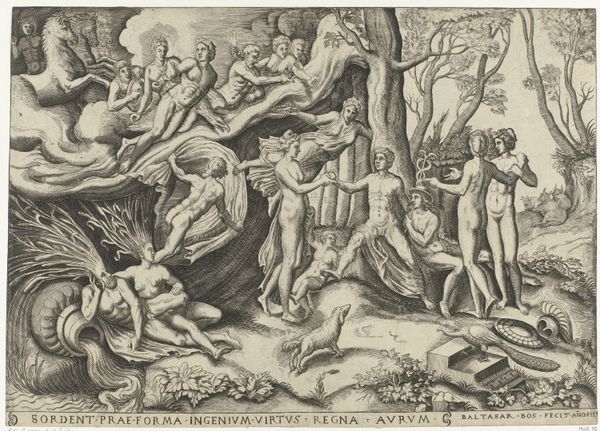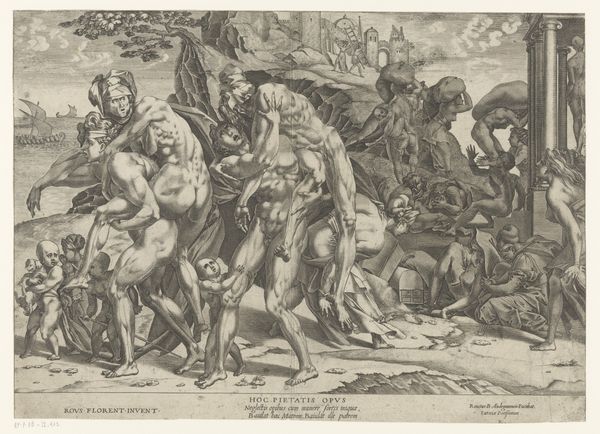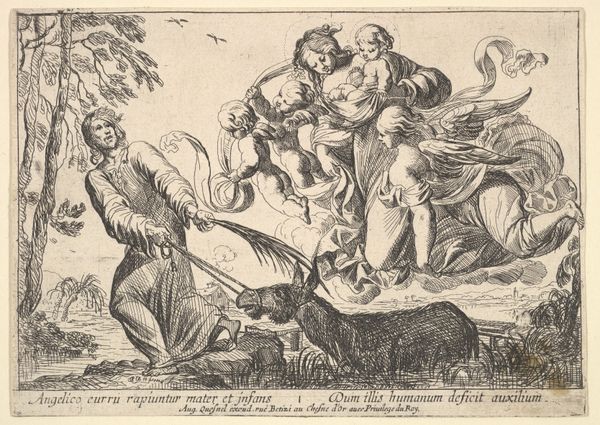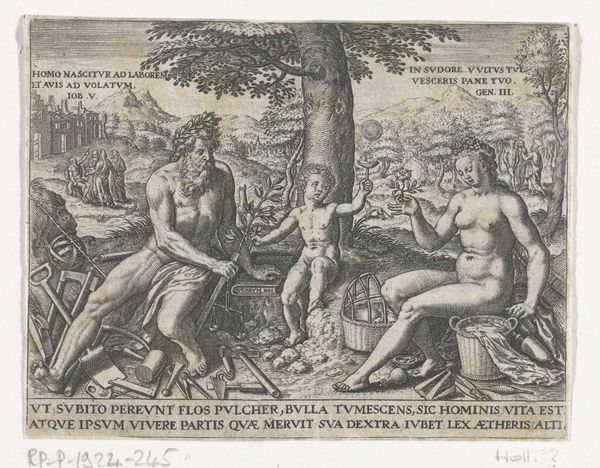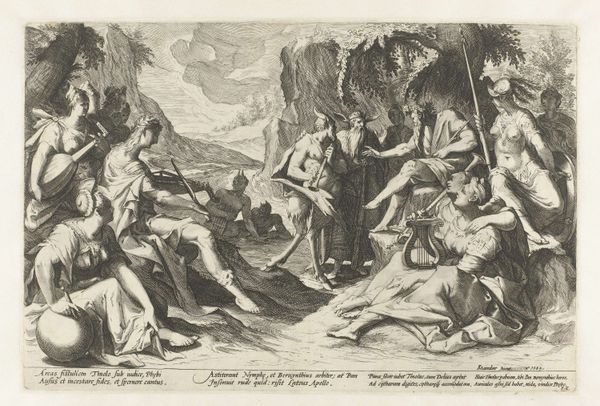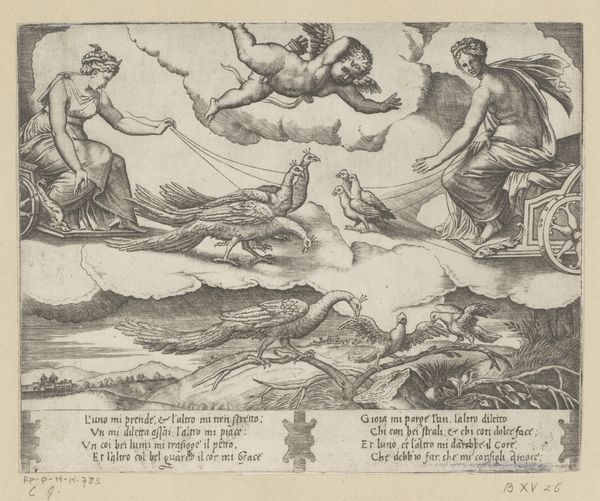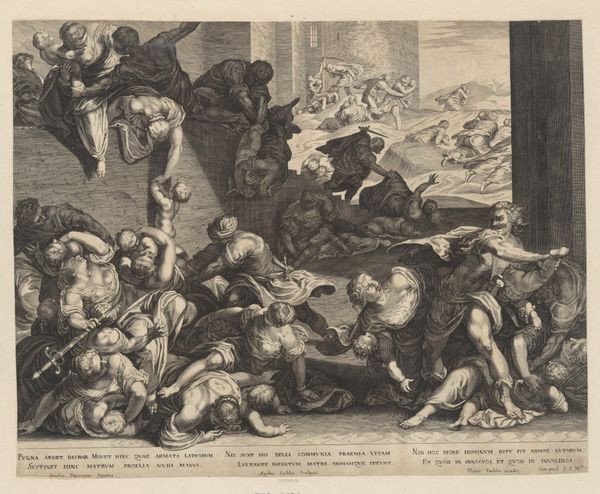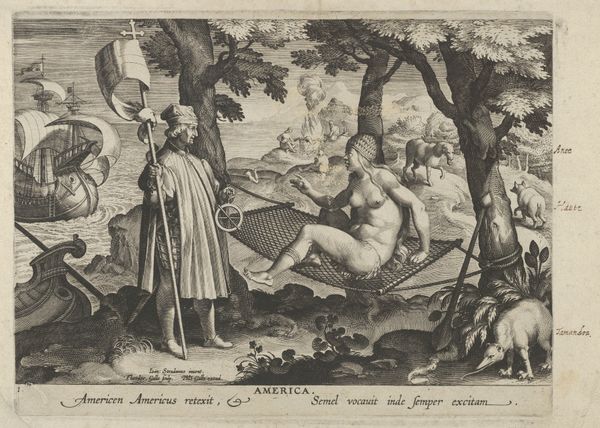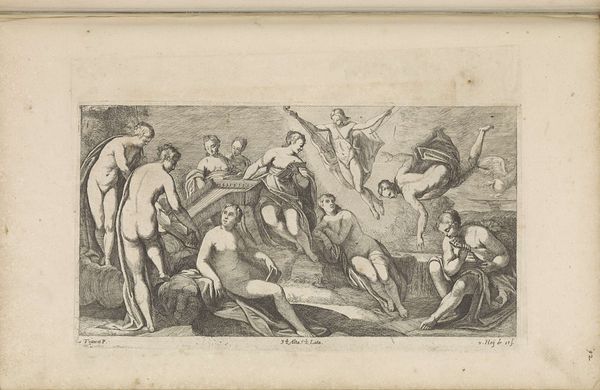
Christus in het voorgeborchte: 'die nedergedaald is ter helle, de derde dag verrezen uit de doden' 1579
0:00
0:00
print, engraving
# print
#
old engraving style
#
figuration
#
history-painting
#
northern-renaissance
#
engraving
Dimensions: height 202 mm, width 243 mm
Copyright: Rijks Museum: Open Domain
Curator: Johann Sadeler I created this engraving, "Christus in het voorgeborchte: 'die nedergedaald is ter helle, de derde dag verrezen uit de doden'," in 1579. Editor: The chaotic energy really grabs me! It feels like a literal descent, a visual depiction of breaking through earthly constraints, made all the more poignant by the medium of print and the labor invested in it. Curator: The composition reflects theological debates of the time, portraying Christ's descent into Limbo to liberate righteous souls—an apocryphal story not found in all Christian traditions. Notice the clear division: above, damnation, and below, liberation through Christ's sacrifice. Consider its relationship to societal structures... who benefits from emphasizing these binary power dynamics? Editor: Right, and seeing it as an engraving reminds me how these images would have been reproduced and disseminated. We need to remember the workshop processes, the artisan's hand tracing these theological concepts. The sheer repetition underscores the religious doctrines in early modern European society, while also thinking about printmaking as an important element to artistic dissemination. Curator: The positioning of Adam and Eve to the right, juxtaposed with those shackled in darkness, creates an interesting tension. It speaks to prevailing beliefs about original sin and redemption within the confines of Northern Renaissance aesthetics. How does seeing them positioned at the margins influence our perspective of their roles within this theological structure? Editor: Absolutely! And consider the materials – ink, paper, the metal plate from which this comes. These weren't passively consumed; they were circulated, traded, and owned. I would love to research the engraver's influences as well! Curator: It is a powerful visual translation of complex theological narratives, indicative of the Reformation era’s preoccupation with sin, redemption, and judgement. Editor: Exactly. Seeing how meaning and belief are physically pressed onto a surface—it helps demystify some of the lofty symbolism and reveals the means of production that perpetuated it. I feel that offers a different perspective on the narrative.
Comments
No comments
Be the first to comment and join the conversation on the ultimate creative platform.

